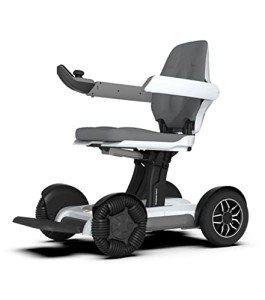Electric Mobility Scooters UK: A Comprehensive Guide
Electric mobility scooters have rapidly end up being a vital part of modern transportation, especially in the United Kingdom. These devices offer a practical, environment-friendly, and affordable alternative for individuals with mobility issues, allowing them to keep their independence and browse their every day lives with greater ease. This article supplies a comprehensive introduction of electric mobility scooters in the UK, including their benefits, types, legal factors to consider, and ideas for selecting the best model.
Introduction to Electric Mobility Scooters
Electric mobility scooters are motorized cars developed to help people with strolling difficulties or other mobility problems. They can be found in various sizes and styles, from compact models for indoor usage to robust, all-terrain scooters for outside activities. These scooters are powered by rechargeable batteries and can reach speeds of as much as 8 mph, depending upon the design.
Benefits of Electric Mobility Scooters
- Improved Independence
- Mobility scooters make it possible for users to travel longer ranges without fatigue, decreasing the requirement for help from others.
- Economical
- Compared to other types of transportation, electric scooters are relatively inexpensive to purchase and keep.
- Eco-Friendly
- Electric mobility scooters produce no emissions, making them an eco-friendly choice.
- Enhanced Accessibility
- These scooters can be used in various settings, from supermarkets and shopping mall to parks and recreational areas, increasing accessibility.
- Social Inclusion
- By providing a method of transportation, mobility scooters help users remain socially linked and participated in neighborhood activities.
Kinds Of Electric Mobility Scooters
Class 2 (Electric Wheelchairs)
- Designed for use on pavements and footpaths.
- Maximum speed: 4 miles per hour.
- Suitable for indoor and outside usage.
Class 3 (Electric mobility scooters uk Mobility Scooters)
- Can be used on roadways, pavements, and footpaths.
- Optimum speed on roadways: 8 mph.
- Maximum speed on pavements: 4 miles per hour.
- Perfect for longer journeys and outside use.
Collapsible Scooters
- Compact and light-weight, developed for simple storage and transport.
- Ideal for users who often travel or have restricted storage area.
All-Terrain Scooters
- Developed to manage rough surface and off-road conditions.
- Typically have larger wheels and more effective motors.
- Ideal for users who take pleasure in outdoor activities like hiking or gardening.
Durable Scooters
- Designed to support users with greater weight capacities.
- Tough building and construction and enhanced resilience.
- Appropriate for individuals who need a more robust and reputable choice.
Legal Considerations in the UK
Licensing and Insurance
- No driving license or insurance coverage is required for Class 2 and Class 3 mobility scooters.
- However, users should be at least 14 years old to ride a Class 3 scooter on the road.
Road Rules
- Class 3 scooters should have a red and amber light system and a rear reflector to be used on the roadway.
- Users need to follow roadway rules and be conscious of their environments.
- Pavement usage is limited to 4 mph for both Class 2 and Class 3 scooters.
Disability Allowance
- Some users may be qualified for a mobility allowance through the UK federal government, which can assist cover the expense of a scooter.
- The Motability Scheme is a government-funded program that supplies financial help for buying mobility help.
Tips for Choosing the Right Electric Mobility Scooter
Evaluate Your Needs
- Figure out where and how you will mainly use the scooter (indoors, outdoors, both).
- Think about the distance you require to travel and the terrain you will experience.
Test Ride
- Go to a regional mobility shop to test ride different designs.
- Guarantee the scooter is comfortable and simple to operate.
Battery Life
- Pick a scooter with a battery life that matches your day-to-day needs.
- Think about the charging time and the accessibility of backup batteries.
Weight Capacity
- Check the weight capacity of the scooter to guarantee it can support your requirements.
- Heavy-duty models are readily available for users with higher weight requirements.
Features and Accessories
- Search for functions like adjustable seats, tilt systems, and easy-to-read control board.
- Think about devices such as baskets, safety belt, and weather condition defense.
Maintenance and Safety
Routine Check-Ups
- Arrange routine upkeep checks to ensure the scooter remains in great working condition.
- Replace worn parts and charge the battery regularly.
Safety Gear
- Always wear proper safety gear, such as a helmet and reflective clothing.
- Use lights and reflectors when riding in low-light conditions.
Roadway Etiquette
- Be considerate to pedestrians and other roadway users.
- Follow designated courses and avoid congested areas.
Storage and Security
- Shop the scooter in a dry, safe location to avoid damage and theft.
- Consider utilizing a locking system or GPS tracker for included security.
Often Asked Questions (FAQs)
Q: Do I need a driving license to use an electric mobility scooter in the UK?
- A: No, a driving license is not required for Class 2 or Class 3 mobility scooters. Nevertheless, users must be at least 14 years old to ride a Class 3 scooter on the road.
Q: Can I use my mobility scooter on the pavement?
- A: Yes, both Class 2 and Class 3 scooters can be utilized on pavements and paths. The optimum speed on pavements is 4 miles per hour.
Q: How much does an electric mobility scooter expense?
- A: Prices vary depending on the design and functions. Entry-level scooters can cost around ₤ 500, while advanced designs can range from ₤ 1,000 to ₤ 5,000.
Q: Is there monetary support offered for buying a mobility scooter?
- A: Yes, the Motability Scheme provides monetary support for qualified individuals. You might also be eligible for a disability allowance to assist cover the cost.
Q: How far can an electric mobility scooter travel on a single charge?
- A: The variety differs by design, but the majority of scooters can take a trip between 10 to 30 miles on a single charge. Heavy-duty designs might have a shorter variety.
Q: Can I transport my mobility scooter in a cars and truck?
- A: Yes, collapsible and light-weight models are developed for easy transportation. Some vehicle makers also offer adaptive devices to accommodate mobility scooters.
Q: Are there any age restrictions for using a mobility scooter?
- A: There are no particular age constraints for utilizing a Class 2 scooter. However, users need to be at least 14 years old to ride a Class 3 scooter on the roadway.
Q: Can I utilize my mobility scooter in bad weather condition?

- A: Most electric mobility scooters are weather-resistant, but it's recommended to use caution and avoid incredibly wet or icy conditions. Think about adding weather protection devices.
Electric mobility scooters have reinvented the method individuals with mobility issues travel and participate in day-to-day activities. With their various benefits, consisting of enhanced independence, cost-effectiveness, and ecological friendliness, they are an important financial investment for lots of people. By comprehending the different kinds of scooters, legal considerations, and upkeep pointers, users can make educated choices and enjoy the full variety of advantages these devices provide. Whether you are trying to find a compact indoor design or a robust all-terrain scooter, there is an ideal option readily available to meet your requirements and enhance your lifestyle.
Additional Resources
- Motability Scheme: Visit the official site to learn more on financial help and eligibility.
- Department for Transport: Read the guidelines for utilizing mobility scooters in the UK.
- Regional Mobility Shops: Find a trusted shop in your location to evaluate trip and purchase a mobility scooter.










